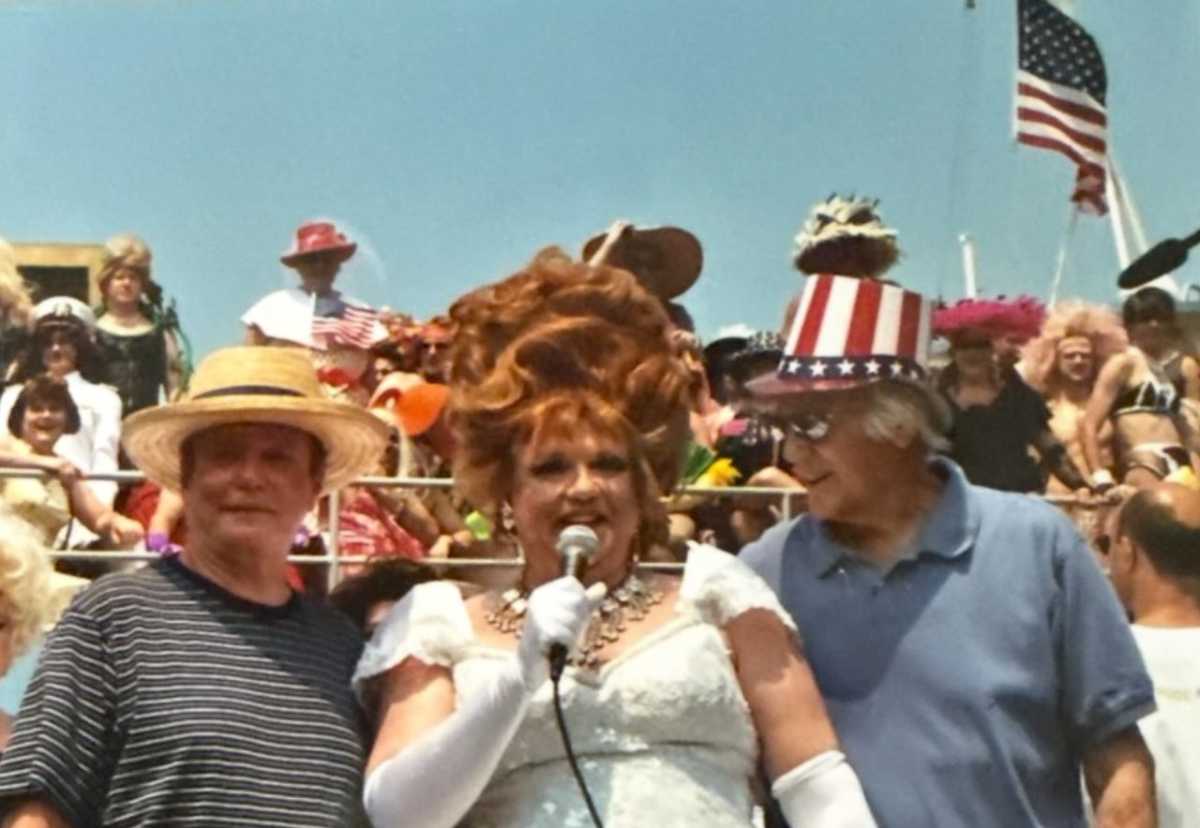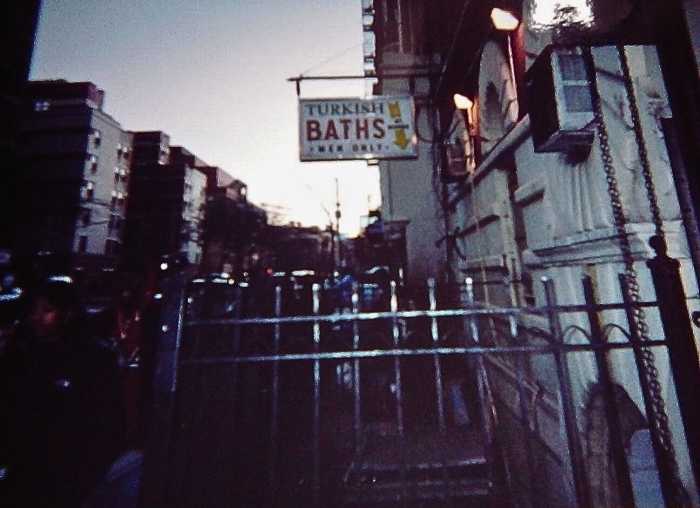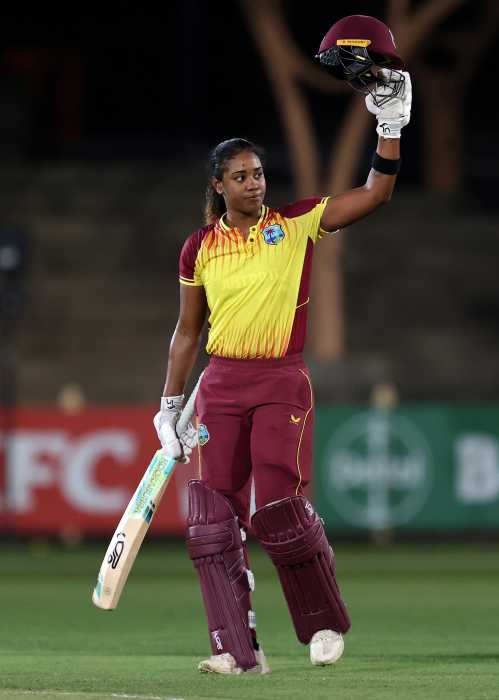The crowd kept arriving at the Green Room at Pier 17 for Linda Simpson’s “Drag Explosion” presentation on February 15. By the time it started, the space was as crowded as, say, a ‘90s-era East Village club that ignored the fire code.
Here in the 21st century, all safety protocols were observed as drag legend Simpson shared her story and photos in “Queer History: Drag and the Waterfront,” presented by the South Street Seaport Museum’s Queer History series. The attendees spanned a wide range of interests, ages, and slideshow-fabulous style.
They lined the walls at the back of the room, drained the supply of white wine, and loudly enjoyed Simpson’s presentation with a lively Q&A afterwards.
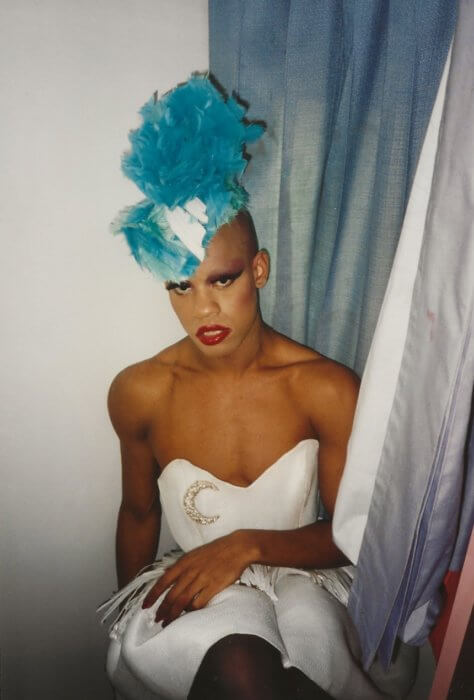
“I was part of the New York nightlife drag scene in the ‘80s and the ‘90s,” Simpson said before the show. “Those were my formative years.” Simpson carried a camera with her and captured her friends, parties, events she organized, and more, in personal shots filled with emotion and bursting with energy.
“I was very interested in what was going on in all of nightlife,” she said. “I really went out a lot and became immersed in the scene, so the people in my photos, I knew 99% of them. I wasn’t a photographer, but just did it for fun and I amassed a lot of photos and put them aside, no big deal,” Simpson said. “Maybe nine years ago, I was looking through them and thought: This makes for an interesting time capsule.”
Simpson had always documented the scenes she was in, both in writing and photography (the archives of her ‘zine, “My Comrade” were recently acquired by Harvard).
She organized the photos and created the “Drag Explosion” slideshow and began to present it to interested audiences, pre-pandemic. She divided the show into chronological chapters she narrated as only a queen could, with personal anecdotes, deep dives into how the scene formed and grew, and of course, the mandatory Lady Bunny jokes.
Then came the pandemic, with its sharp echoes of the AIDS pandemic that took so many lives in in the ‘80s and ‘90s.
As art stalled, hibernated, woke, pivoted, and changed direction, “Drag Explosion” was reborn as a book.
Simpson worked with publisher David Knowles of Domain, a “queer led and design driven” indie imprint, to create the book “Drag Explosion.”
The book stands on its own as an art piece: It’s a gorgeous, hefty hardback filled with Simpson’s photos, art-directed by Knowles, with additional text by Simpson, and contributions from Lady Bunny and renowned scholar Tavia Nyong’o.
The book sold out its first printing, and reviewers praised the moments Simpson captured. “They said there’s a sense of sense of intimacy with the photos, and I agree, because I was friends with the people, or at least friendly, and these were candid shots. It wasn’t like now, when people are so used to taking photos, so in a way there’s a rawness to these.”
Simpson recalled that some clubs prohibited cameras, because there were closeted patrons who didn’t want to be seen there. She brought her camera to shows she produced and performed in and was able to capture real moments in dressing rooms and at parties.
The show and the book track the era and style of drag history from the early 1980s to the mid-‘90s, from its start in the East Village “as kind of an underground art form,” and a form of protest during the ACT UP era, emerging into the club scene in New York and internationally, with RuPaul as the tip of an arrow that went straight to the heart of pop culture.
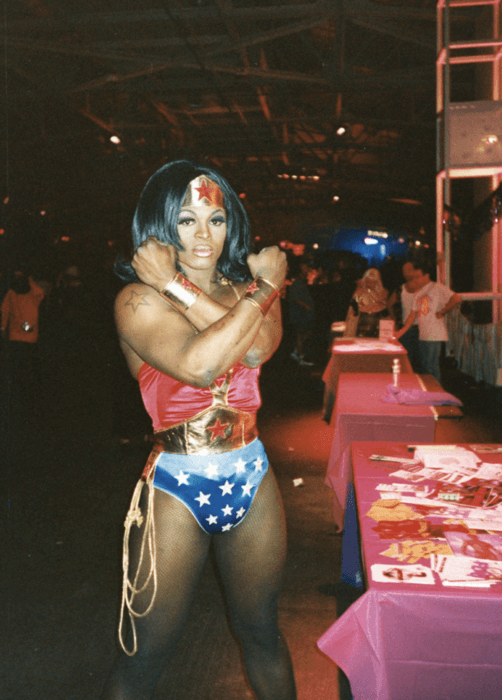
Simpson’s goal for “Drag Explosion” is “to pay homage to that really fantastic time with a lot of fantastic people. This all happened during the AIDS crisis, so it they were very charged times.”
In her show and in her book, Simpson explores the people she knew in the life and times of the era, pointing out early influences, reminiscing about missing friends (who died of AIDS, of addiction, and other causes) in a time when politicians othered and excoriated queer people.
In the arc of another pandemic, in a time when politicians are passing legislation against queer people, audience members asked Simpson about the role of drag today, and what she thinks of terms like “family friendly.”
“I feel like they’re really fighting a losing battle,” she said of the right-wing push. “Have you ever been to RuPaul’s drag con? I mean, there’s families pushing strollers there!” She spoke of how there are drag queens entertaining on cruises, making a living from their craft, audiences flocking to drag shows, and bringing their children to Drag Story Hours.
On the other hand, there are currently more than a dozen states proposing anti-gay and trans legislation.
“Forget everything I just said!” Simpson told the audience.
It’s a wise queen who remembers history and knows that it repeats itself.



